Archive | Social development and protection RSS feed for this section
Economics, Health, Social development and protection
 Economics, Health, Social development and protection
Economics, Health, Social development and protection
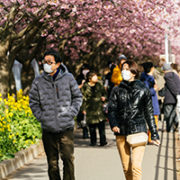 Capacity development, Education, Information and Communications Technology, Social development and protection
Capacity development, Education, Information and Communications Technology, Social development and protection
 Health, Poverty, Social development and protection
Health, Poverty, Social development and protection
 Economics, Finance sector development, Poverty, Social development and protection
Economics, Finance sector development, Poverty, Social development and protection
 Economics, Environment, Infrastructure, Population, Poverty, Social development and protection, Urban development
Economics, Environment, Infrastructure, Population, Poverty, Social development and protection, Urban development
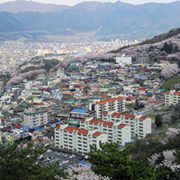 Economics, Education, Environment, Health, Population, Social development and protection, Urban development
Economics, Education, Environment, Health, Population, Social development and protection, Urban development
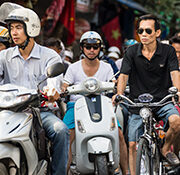 Economics, Education, Finance sector development, Governance and public sector management, Poverty, Social development and protection
Economics, Education, Finance sector development, Governance and public sector management, Poverty, Social development and protection
 Infrastructure, Social development and protection
Infrastructure, Social development and protection
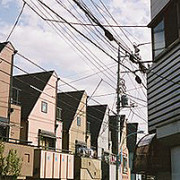 Education, Social development and protection
Education, Social development and protection

Improve handwashing access to combat COVID-19

Medical experts and institutions tell us that a critical but simple lifesaving action to reduce vulnerability to COVID-19 is literally in our own hands—regular handwashing with soap. Public awareness efforts underscore the need for greater behavioral compliance.
Recovering from shocks is what Asia knows best

Unimaginable setbacks to Japan nine years ago from the triple disasters of the earthquake, tsunami, and Fukushima emergency were used to pioneer new approaches to regional development and integrated reconstruction to build back better, safer, and greener.
T20 and realizing education for all in the Digital Age

Education is a key driver for sustainable development (UNESCO 2018). However, the goal of realizing education for all in the Digital Age faces two major challenges. First, many countries and economies are still not ensuring quality education for all. Millions of children and youth still lack the necessary tools to realize their potential amid economic, political, and social strife. Second, with the emergence of the fourth Industrial Revolution and the growing use of automation, big data, and artificial intelligence, human labor is being substituted increasingly by machines or algorithms.
Is Indonesia’s subsidized rice program benefitting its children?

Indonesia’s subsidized rice program, RASKIN (also known as Operasi Pasar Khusus), constitutes the longest running and the largest in-kind transfer for poor households in Indonesia. In 2010, government expenditure on RASKIN accounted for 53% of the total household-targeted social assistance. What has been the impact of this program on child health in Indonesia? Our recent paper (Gupta and Huang 2018) is, in this regard, the first attempt in the literature to analyze this issue in the context of Indonesia.
International remittances and poverty reduction

The World Bank (2014) estimates that international remittances to developing countries reached $436 billion in 2014. Remittances to the East Asia and the Pacific region and the South Asia region account for the largest and second-largest shares in the world. The authors examine the impact of international remittances on poverty reduction to determine whether such remittances contributed to a reduction in various indicators of poverty.
Housing policy in the Republic of Korea

This article evaluates housing policy in the Republic of Korea over the past 5 decades or so, and describes new challenges arising from the changing environment. The most pressing housing problem in the early phase of development of the Republic of Korea was an absolute shortage of housing. The country addressed this problem with the pragmatic approach of engaging the market using government intervention as leverage.
Pointers from Asia for urbanization in Africa

Africa and Asia are latecomers to urbanization. In these two continents, less than half live in urban centers, while elsewhere, more than 70% of people do. But Africa and Asia are now rapidly urbanizing, with Asian cities growing at an average of 1.5% per year and Africa’s at 1.1% per year.
Costs of expanded public pension coverage in emerging Asia

The fiscal burden of public pensions in most emerging Asian economies is relatively small, reflecting relatively young populations and limited coverage of the retired-age population in public pension programs. Nonetheless, these conditions are likely to change dramatically in the coming decades. First, many Asian economies will face rapidly aging populations, which will raise pension and other old-age-related spending substantially. Second, as economies develop, political pressures to expand the coverage of public pensions and raise the level of pension benefits relative to income will likely increase.
On the unintended consequences of housing policies: A cautionary tale of three developed countries

Lack of affordable housing is a serious policy concern in many countries. In large prosperous cities such as London, New York, Beijing, or Tokyo, the affordability crisis is particularly acute. In these cities, households often live in excessively expensive and crammed spaces. Homeownership remains an unachievable dream for many. Not surprisingly, voters in these places pressure politicians into implementing policies that tackle the crisis.
Skills and good jobs

Education and skills are important policy levers for sustainable socioeconomic growth. With the right economic fundamentals, a highly educated population with the appropriate skills is a powerful tool for economies to move from the low-income to the middle-income status, or for those already in the middle-income category to avoid the middle-income trap and move to the high-income category. Skills shortages are a pressing issue as they limit the growth of output in the short term and limit the possibility for diversification and innovation in the long term.

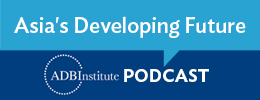
Search
Subscribe / Connect to Asia Pathways
Subjects
- Agriculture and natural resources
- Blog
- Capacity development
- Climate change
- Economics
- Education
- Energy
- Environment
- Finance sector development
- Gender
- Governance and public sector management
- Health
- Industry and trade
- Information and Communications Technology
- Infrastructure
- Miscellaneous
- Population
- Poverty
- Private sector development
- Regional cooperation and integration
- Sanitation
- Social development and protection
- Transport
- Uncategorized
- Urban development
- Video Blog
- Water
Recent Posts
- Artificial intelligence: A new driver for inclusive growth and development?
- Increasing trust in cross-border e-commerce and artificial intelligence
- Enhancing access to maternal and newborn healthcare in developing Asia
- Can electric vehicles lead the way to a sustainable future?
- Mitigating climate-related sovereign risk to accelerate action on the climate emergency




Recent Comments